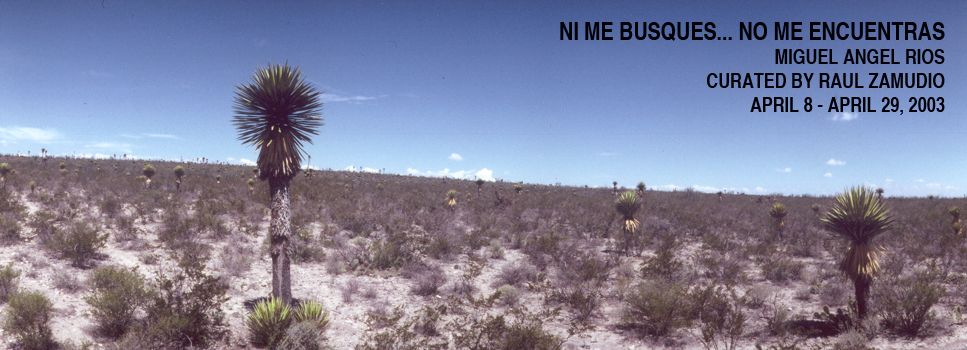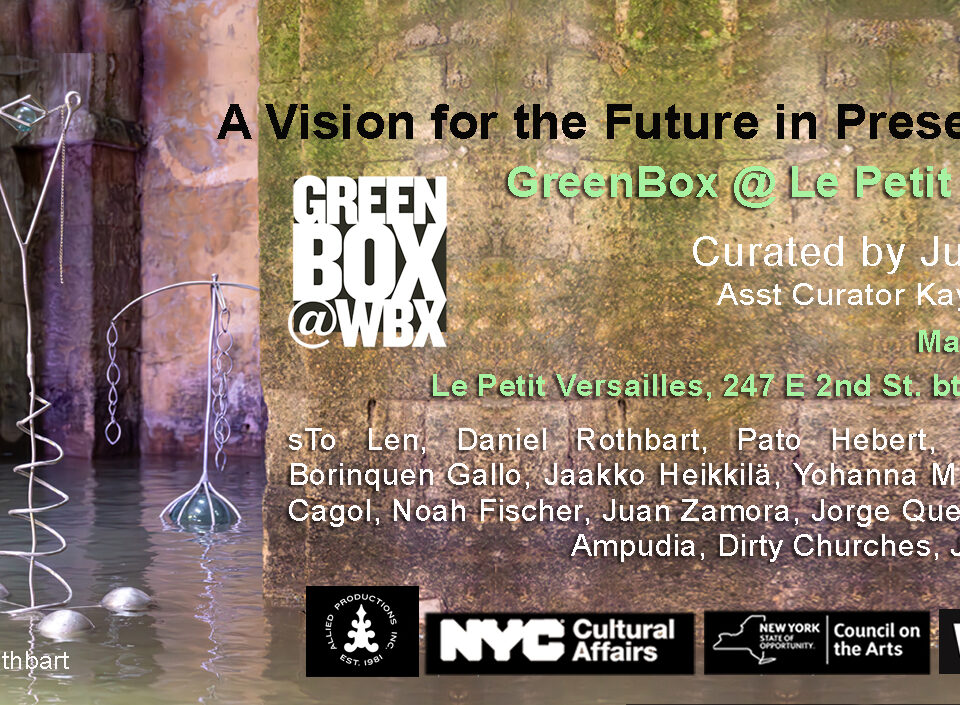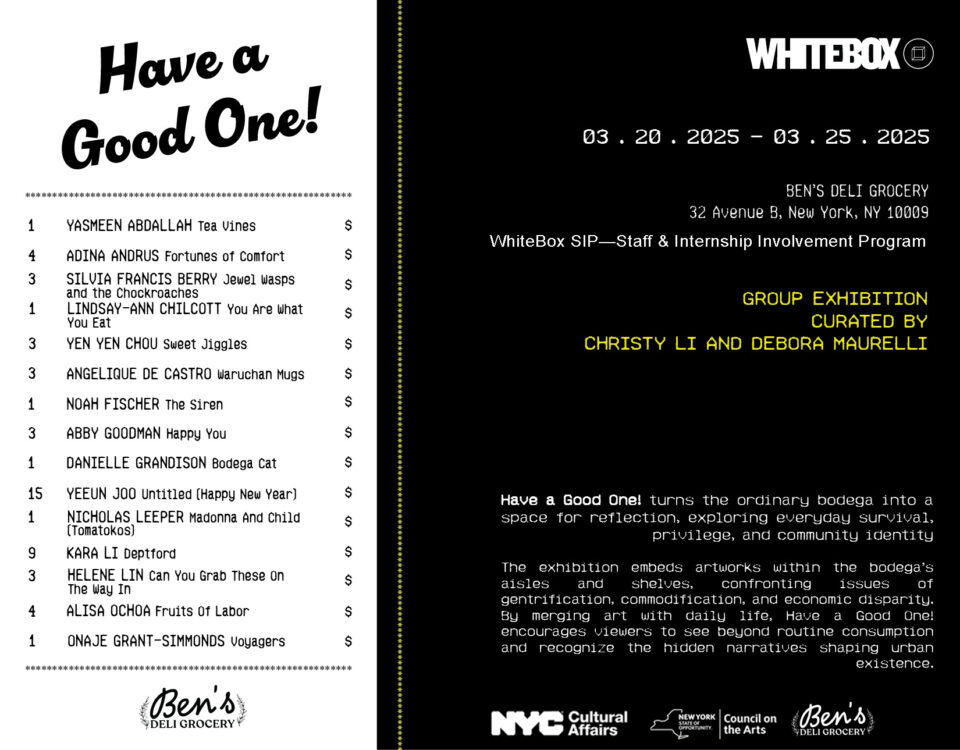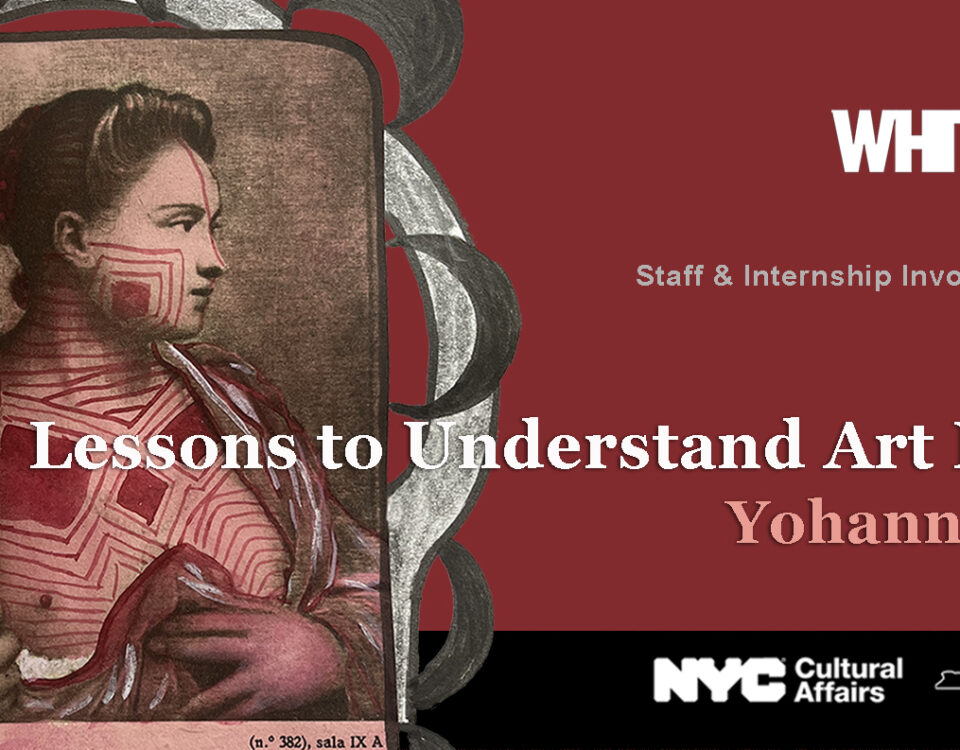William Anastasi: Blind
March 8, 2003WOMAN ON WOMAN
May 1, 2003A THREE-CHANNEL DVD PROJECTION AND RELATED WORKS ON PAPER CURATED BY RAUL ZAMUDIO APRIL 8 – APRIL 29, 2003
Ni me busques …No me encuentras is an exhibition of recent work by Miguel Angel Rios consisting of a three-channel DVD projection and related works on paper. The DVD projection, from which the exhibition takes its name, was filmed in the desert region of San Luis Potosi, Mexico. The locale of Ni me busques…No me encuentras situates it within the rich history of landscape representation. Some influences that can be detected in the work are the Dutch Baroque panorama, Nature and the Kantian sublime, late 19th century photography and optical viewing machines like the stereoscope, and the landscape paintings of Dr. Atl.
The use of landscape in the exhibition is more than just a backdrop, for it is part of a genre that is rife with cultural, social and political meaning. This can be seen in the diverse traditions of landscape depiction that are equally inscribed with the historical context of their inception as well as being articulations of a particular aesthetic or style. Thus the Dutch Baroque panorama, for example, evinces not only to what the art historian Sveltlana Alpers calls “The Art of Describing,” but is also related in a roundabout way to Dutch colonialism via the role of the artist as dominant surveyor over a subordinated landscape. Rios’s DVD projection addresses this by presenting us a psycho-geographical sojourn that unfolds within an organic mise-en-scene of animated flora and fauna.
Ni busques…No me encuentras concerns the artist’s search for the sacred, indigenous cactus otherwise known as peyote in the vast, desert landscape. In a different spin on the flâneur not as cosmopolitan but as botanist, the artist is confronted by a plethora of philosophical conundrums. Wandering in the landscape, Rios encounters a band of folk musicians playing a funeral march. This music is part of the soundtrack of his peregrination, which also includes the hypnotic rustle of the wind and the Doppler effect of an audible, yet invisible train.
Included in the exhibition are related works on paper of landscape imagery enhanced through digitization. They serve as formal and thematic counterpoints to the DVD projection, creating a visual and conceptual dialogue between them. Whereas the DVD projection is devoid of post-production manipulation and is formally driven by wide-pan shots, multi-channel projection and other cinematic techniques that allude to the landscape as “subjective,” the works on paper subvert landscape representation altogether through their emphasis on simulation and artificiality. The exhibition poetically reminds us what a philosopher once said about nature in general: “that nature is anything but natural.”




